
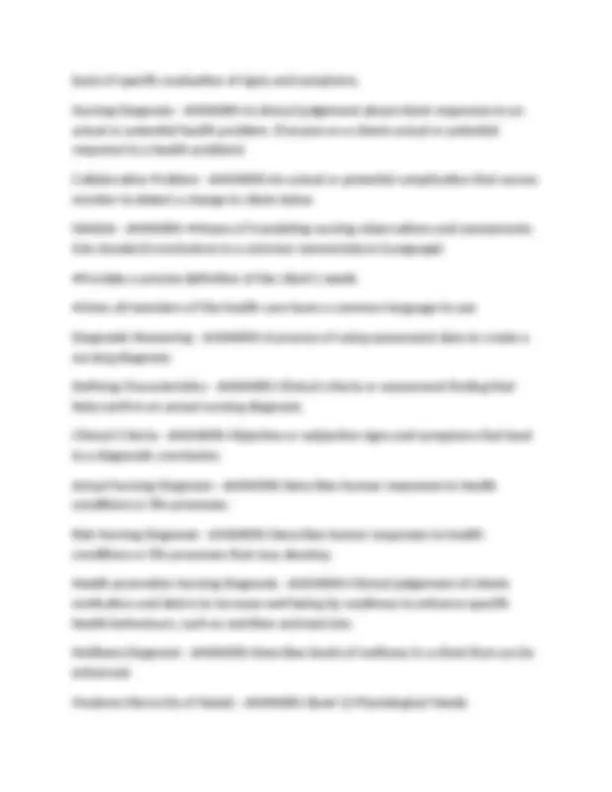
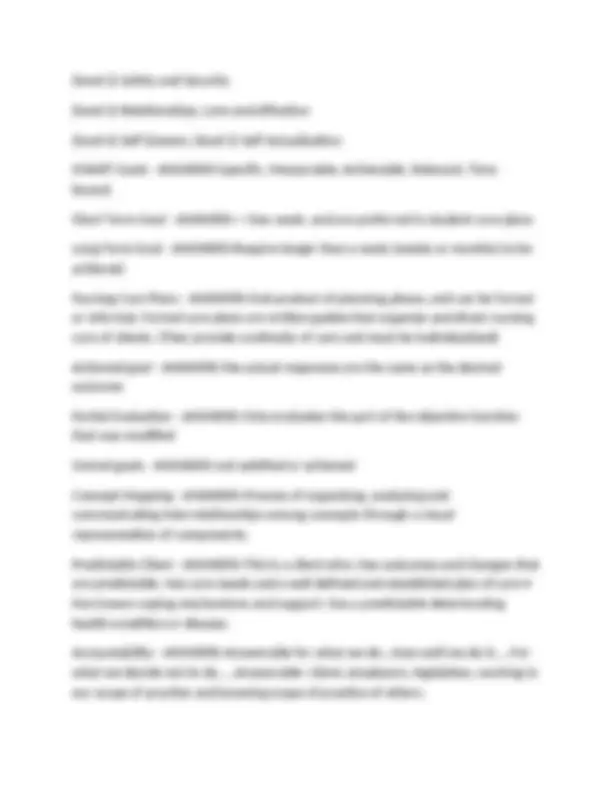
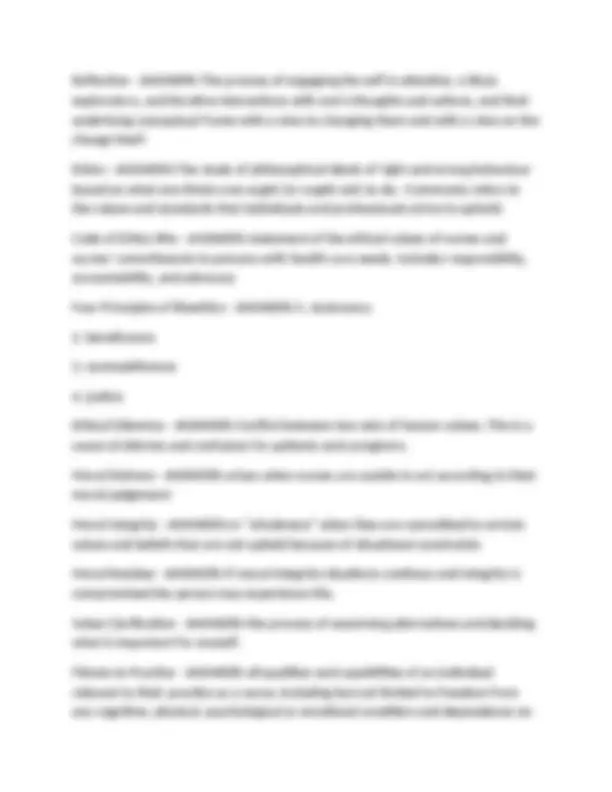

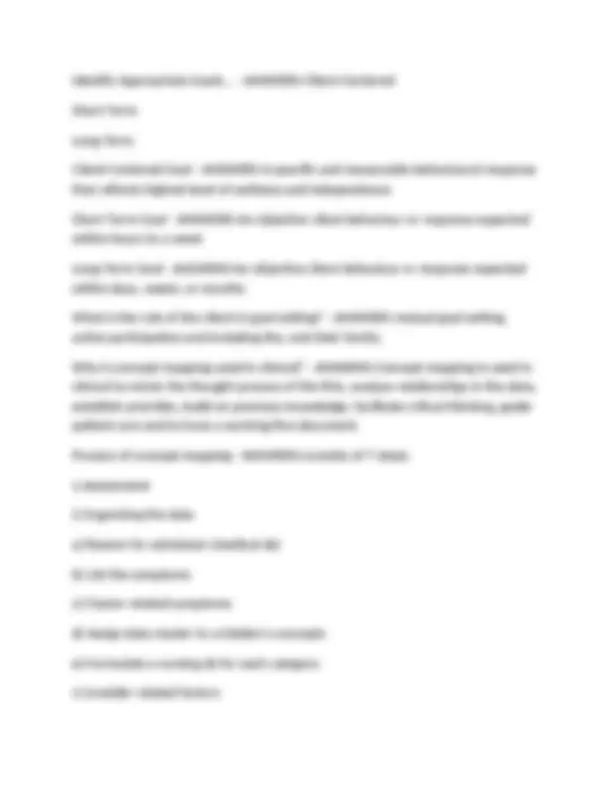
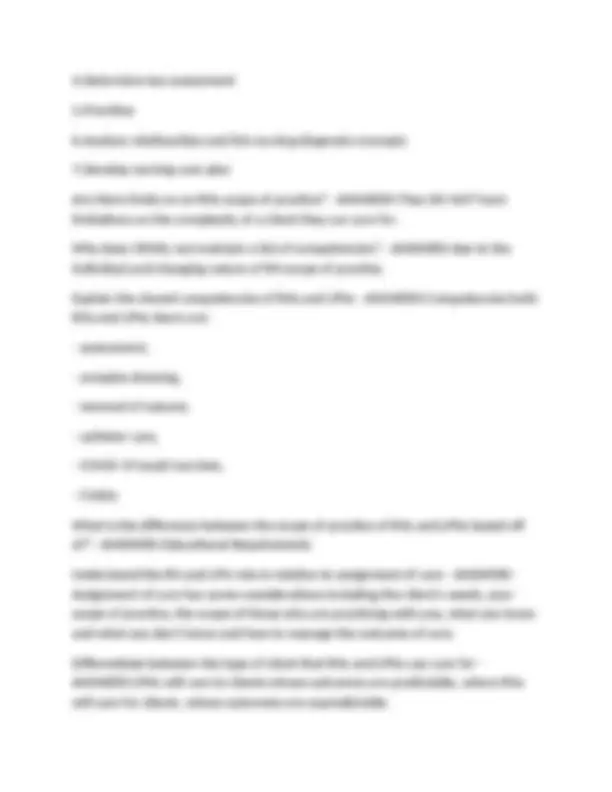
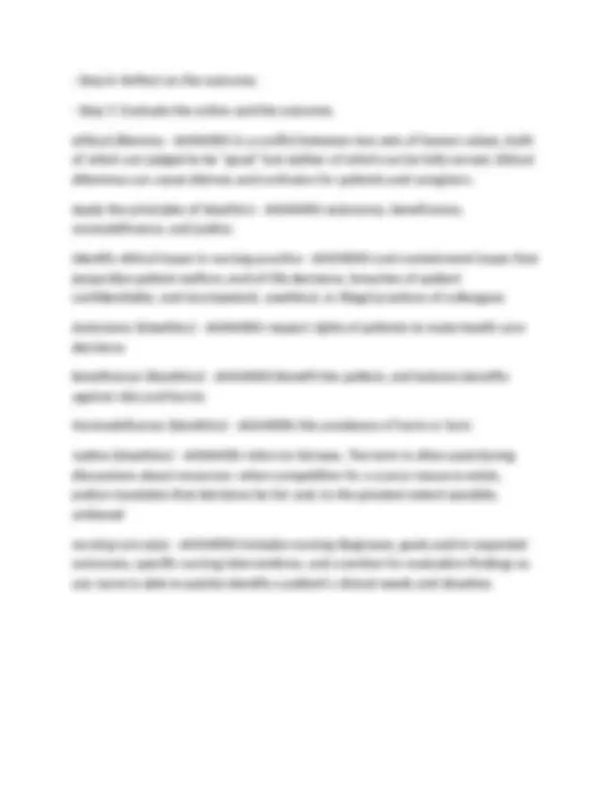


Study with the several resources on Docsity

Earn points by helping other students or get them with a premium plan


Prepare for your exams
Study with the several resources on Docsity

Earn points to download
Earn points by helping other students or get them with a premium plan
Community
Ask the community for help and clear up your study doubts
Discover the best universities in your country according to Docsity users
Free resources
Download our free guides on studying techniques, anxiety management strategies, and thesis advice from Docsity tutors
Nurs 1004 FINAL STUDY GUIDE FALL 2025 QUESTIONS WITH COMPLETE SOLUTIONS 2025 LATEST UPDATE GRADED A+. Nurs 1004 FINAL STUDY GUIDE FALL 2025 QUESTIONS WITH COMPLETE SOLUTIONS 2025 LATEST UPDATE GRADED A+.
Typology: Exams
1 / 13

This page cannot be seen from the preview
Don't miss anything!








Clinical Judgement - ANSWERS-An interpretation or conclusion about a patient's needs, concerns, or health problems, and/or the decision to take action (or not), use or modify standard approaches, or improvise new ones as deemed appropriate by the patient's response Clinical Decision Making Model - ANSWERS-The nursing process. Assessment, diagnoses, planning, interventions, evaluation. ADPIE Nursing Process - ANSWERS-Five step process, 1. asses: perform a nursing assesment
and health promotion activities to the client, consulting with other health care providers, or providing medications or other therapies within the scope of practice of the registered nurse. Evaluation - ANSWERS-The nurse conducts an evaluation of the client's response to the selected interventions and determines whether the interventions were effective. Primary Source - ANSWERS-this source is the client Secondary Source - ANSWERS-information from someplace other than the client, such as family members or significant others, medical records, and health care team. Tertiary Source - ANSWERS-Provide information outside the specific client's frame of reference and are a result of the nurse's or other health care team member's response to care, including textbooks, a nurse's experience, and patterns noticed in other clients with similar presentations and conditions. Cue - ANSWERS-information that a nurse obtains through use of the senses. Validation - ANSWERS-the action of checking or proving the accuracy of something Inference - ANSWERS-a conclusion reached on the basis of evidence and reasoning Objective data - ANSWERS-Are observations or measurements of a client's health status. (i.e. blood pressure) Subjective Data - ANSWERS-Are client's verbal descriptions of their health concerns. obtained through the health history and the nurse's questions and the explanation the client provides(i.e. Patient states they are nauseous) Cluster Data - ANSWERS-A set of signs or symptoms that are grouped together in a logical way. Medical Diagnosis - ANSWERS-The identification of a disease condition on the
(level 2) Safety and Security (level 3) Relationships, Love and Affection (level 4) Self Esteem, (level 5) Self-Actualization SMART Goals - ANSWERS-Specific, Measurable, Achievable, Relevant, Time bound. Short Term Goal - ANSWERS-< One week. and are preferred in student care plans Long Term Goal - ANSWERS-Require longer than a week (weeks or months) to be achieved. Nursing Care Plans - ANSWERS-End product of planning phase, and can be formal or informal. Formal care plans are written guides that organize and direct nursing care of clients. (They provide continuity of care and must be individualized) Achieved goal - ANSWERS-the actual responses are the same as the desired outcome Partial Evaluation - ANSWERS-Only evaluates the part of the objective function that was modified Unmet goals - ANSWERS-not satisfied or achieved Concept Mapping - ANSWERS-Process of organizing, analyzing and communicating interrelationships among concepts through a visual representation of components. Predictable Client - ANSWERS-This is a client who: Has outcomes and changes that are predictable. Has care needs and a well defined and established plan of care • Has known coping mechanisms and support. Has a predictable deteriorating health condition or disease. Accountability - ANSWERS-Answerable for what we do...How well we do it.....For what we decide not to do.....Answerable- client, employers, legislation, working in our scope of practice and knowing scope of practice of others.
Reflection - ANSWERS-The process of engaging the self in attentive, critical, exploratory, and iterative interactions with one's thoughts and actions, and their underlying conceptual frame with a view to changing them and with a view on the change itself. Ethics - ANSWERS-The study of philosophical ideals of right and wrong behaviour based on what one thinks one ought (or ought not) to do. -Commonly refers to the values and standards that individuals and professionals strive to uphold. Code of Ethics RNs - ANSWERS-statement of the ethical values of nurses and nurses' commitments to persons with health care needs. Includes responsibility, accountability, and advocacy Four Principles of Bioethics - ANSWERS-1. Autonomy
What are some important considerations during assessment of the patient? - ANSWERS-the patient's ability to perform self-care, usual hygiene practices, and preferences with special attention to balance, coordination, strength, range of motion, and activity tolerance. List three methods of data collection used during assessment. - ANSWERS-1. Nursing health history: gathered during initial or early contact
Related factors Definition Risk factors Support of the diagnostic statement Three parts to a diagnostic statement are - ANSWERS-1.Actual Problem 2.Potential Problem 3.Wellness Response Why is it important to establish priorities? - ANSWERS-Helps nurses anticipate and sequence nursing interventions. It also is important for ranking diagnoses in order of importance. What factors should be considered when establishing priorities? - ANSWERS- Client's health values and beliefs. Client's priorities Resources available Urgency of health problem Medical treatment plan What factors should be considered when establishing goals? - ANSWERS-Focus on client responses, not nursing activities. Should be realistic. Compatible with therapies of other professionals. Base the goal on one nursing diagnosis. Use observable, measurable terms for outcomes. Make sure the client considers the goals / outcomes important and values them.
4.Determine key assessment 5.Prioritize 6.Analyze relationships and link nursing diagnosis concepts 7.Develop nursing care plan Are there limits on an RNs scope of practice? - ANSWERS-They DO NOT have limitations on the complexity of a client they can care for. Why does CRNNL not maintain a list of competencies? - ANSWERS-due to the individual and changing nature of RN scope of practice. Explain the shared competencies of RNs and LPNs - ANSWERS-Competencies both RNs and LPNs share are:
In the event of a client who initially has predictable outcomes but something has changed, an LPN with collaboration of an RN is responsible for this client. What is the goal of reflection? - ANSWERS-Regardless of the type of experience, that is, positive or negative, improvement remains the goal of reflection. Carpers four ways of knowing that is utilized by Johns Model - ANSWERS-1. The aesthetic: Art of nursing-empathy
· Step 6: Reflect on the outcome. · Step 7: Evaluate the action and the outcome. ethical dilemma - ANSWERS-is a conflict between two sets of human values, both of which are judged to be "good" but neither of which can be fully served. Ethical dilemmas can cause distress and confusion for patients and caregivers. Apply the principles of bioethics - ANSWERS-autonomy, beneficence, nonmaleficence, and justice. Identify ethical issues in nursing practice - ANSWERS-cost-containment issues that jeopardize patient welfare, end-of-life decisions, breaches of patient confidentiality, and incompetent, unethical, or illegal practices of colleagues Autonomy (bioethics) - ANSWERS-respect rights of patients to make health care decisions Beneficence (bioethics) - ANSWERS-Benefit the patient, and balance benefits against risks and harms Nonmaleficence (bioethics) - ANSWERS-the avoidance of harm or hurt. Justice (bioethics) - ANSWERS-refers to fairness. The term is often used during discussions about resources: when competition for a scarce resource exists, justice mandates that decisions be fair and, to the greatest extent possible, unbiased nursing care plan - ANSWERS-includes nursing diagnoses, goals and/or expected outcomes, specific nursing interventions, and a section for evaluation findings so any nurse is able to quickly identify a patient's clinical needs and situation.